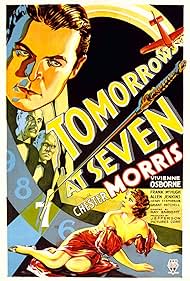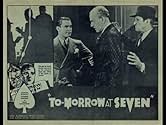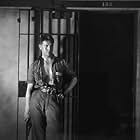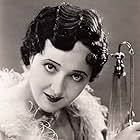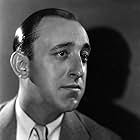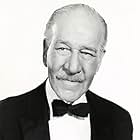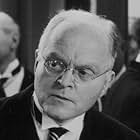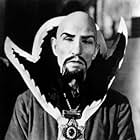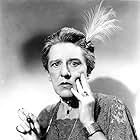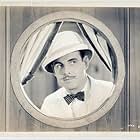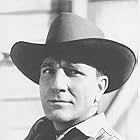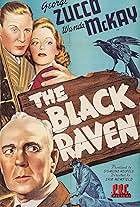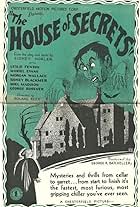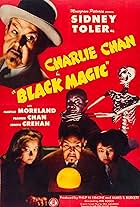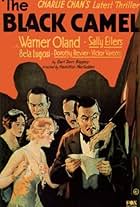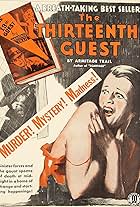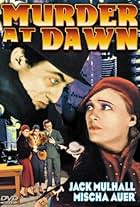People in an old, dark mansion are menaced by a maniac called "The Black Ace."People in an old, dark mansion are menaced by a maniac called "The Black Ace."People in an old, dark mansion are menaced by a maniac called "The Black Ace."
Photos
- Director
- Writer
- All cast & crew
- Production, box office & more at IMDbPro
Storyline
Did you know
- Trivia"Crime doesn't pay" says Neil Broderick. This maxim, originating as a slogan of the FBI and given wide currency by the cartoon character Dick Tracy, was first recorded in 1927.
- Quotes
Clancy: What's up, Mr. Drake?
Thornton Drake: You of course know this 'Black Ace.'
Clancy: Oh, sure. We *just* missed catching him about 6 months ago.
Dugan: Sure, we trapped one of his earwiggers. It was like this: I'm wise this guy blatts out for stoolin'. So I'm crowdin' him wit' the heater but he don't belch. I know he's an alky stiff so I start feedin' him the dynamite when Clancy walks in wit' this guy's twist. She's all full o' happy dust and leapin'. He calls for a blizzard so we let 'er have it, figgerin' on the beef, see? She don't open up on the Black Ace, but she spills enough on this earwigger to get him fried in New York last September.
Thornton Drake: What's he talking about?
Clancy: [to Dugan] How many times have I gotta tell ya? These guys don't understand them technical terms!
[to Drake]
Clancy: What he's tryin' to say is this: We buttoned one o' the Black Ace's spies who dropped a dim. He's sweatin' the guy with a rod, but it's no dice. But he remembers that the guy's a stew! So he starts givin' him a jolt now and then. Just then I breezes in with the guy's moll. She's a snowbird. So I gives her a sniff of the gold dust and she opens up on the guy. Last September they gave him the hot squat. That's what he's tryin' to tell ya.
Neil Broderick: [to Dugan] You were a little vague.
Dugan: [offended] Who's a vag?
In this case, the murderer proclaims his intentions in advance by delivering to each victim an ace of spades (the death card), with a neatly-written message announcing the hour at which he intends to do the deed. Naturally, he consistently manages to kill his victims (and get away clean, his identity a secret) even though they've been well and fairly warned. As the killer neglects to leave his name in the guest-book, he is cried the Ace of Spades.
He murders wealthy art dealer Asa Marsden, and here we get another old-movie cliché: the murder shown from the killer's viewpoint. We see the victim goggling into the camera as the killer carks him, but the murderer is unseen.
Next, the Ace of Spades announces his intention to murder wealthy Thornton Drake 'tomorrow at seven'. (Presumably this is P.M., not A.M. ... surely even serial murderers shouldn't have to get up early.) At the fatal hour, the deed is done aboard an aeroplane in flight. At the stroke of seven, the lights go out in the passenger cabin ... then they switch on again, and there's a corpse on the deckplates, stabbed through the heart. But the dead man isn't Drake: it's his secretary Austin Winters. Afterwards, the pilot claims to know nothing.
The official detectives in this movie are played by two of my favourite character actors: Frank McHugh and the superb Allen Jenkins. Here they play characters named Clancy and Dugan, which gives you some idea of what to expect. Unfortunately, both actors perform their sleuth roles as comedy relief, which I found regrettable: the murders in this movie are played straight, so the seriousness of the homicides is undercut by the intentional comedy of the detectives trying to catch the killer. Screenwriter Ralph Spence often combined straightforward chills and broad comedy in his scripts -- notably in his play 'The Gorilla' -- but here the mixture isn't as smooth as usual.
The hero of this film is played by Chester Morris, so it's obvious who will solve the crime. For some reason, a lot of Hollywood whodunnits of the 1930s and '40s featured *amateur* detectives. Here, Morris plays a mystery novelist (oh, boy) who is researching the criminal career of the Ace of Spades as material for his next book. Morris decides that it might make a nice finish for his book if he actually catches the murderer.
Along with this film's other merits, there's the Batman factor. It's well known that Batman's greatest villain the Joker (created in 1939) was inspired by the character played by Conrad Veidt in 'The Man Who Laughs'. But the premise of 'Tomorrow at Seven' strongly resembles the premise of the Joker's debut story, and this 1933 movie may have supplied some inspiration to Batman's scriptwriter Bill Finger.
'Tomorrow at Seven' has a lot of the little touches that make 1930s B-movies so enjoyable. Unfortunately, this movie also has a couple of the little touches so typical of that time which are very much *less* enjoyable. Here, we get a mercifully brief turn by African-American actor Gus Robinson in a 'yassuh!' role. I don't blame Robinson, whose options as a black actor in 1930s Hollywood must have been limited. I'll rate this otherwise enjoyable movie 7 out of 10.
- F Gwynplaine MacIntyre
- Mar 14, 2005
- Permalink
Details
- Release date
- Country of origin
- Languages
- Also known as
- A las siete en punto
- Production company
- See more company credits at IMDbPro
- Runtime1 hour 2 minutes
- Color
- Aspect ratio
- 1.37 : 1
Contribute to this page

